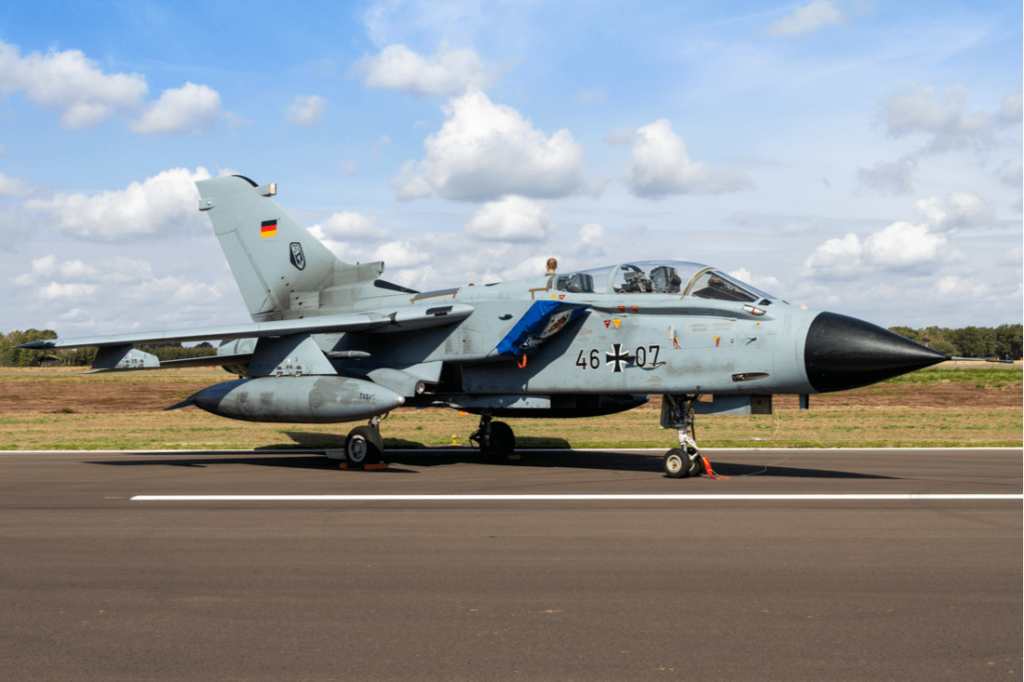Since 2017, the German government has been actively looking to replace its aging fleet of Panavia Tornado aircraft. The strike aircraft that entered service in the 1970s is now even too old to participate in NATO missions. After eliminating the Lockheed F-35 and the Boeing F-15 SE, the German Ministry of Defense could now be favoring the Boeing F/A-18 Super Hornet over its homemade fighter jet, the Eurofighter Typhoon. In a scenario reminiscent of the Belgian procurement, external commitments could have been a determining factor.
As part of NATO nuclear sharing, participating countries have to operate at least one type of aircraft capable of carrying one of the estimated 190 U.S. B61 nuclear bombs stockpiled on their soil. This agreement negotiated secretly during the Cold War was meant for a quicker response to any nuclear threat coming from Russia. Back in October 2018, it was presented as one of the criteria that oriented the choice of the Belgian authorities to replace the F-16 with the Lockheed Martin F-35 instead of the Eurofighter Typhoon.
Currently, the Panavia Tornado is the designated aircraft of the Luftwaffe, the German air force, for NATO nuclear capabilities. Its successor should logically share the same characteristic. Karl Müllner, Chief of the Luftwaffe, had publicly lobbied for a fifth-generation aircraft (namely the F-35) to replace the Tornado. His opinion eventually cost him his position. In February 2019, the F-35 was officially rejected by the German authorities, partly because it would have threatened the Franco-German fighter jet program (FCAS) due to redundancy. The Boeing F-15 SE was also put aside.
The previous German defense minister Ursula von der Leyen was openly favoring a European choice with the Typhoon. In June 2018, an official request was sent to the U.S. authorities to determine the costs and timeframe required for the aircraft to be able to carry out nuclear missions. According to recent information revealed by the German media Süddeutsche Zeitung, the answer might have pressured the ministry to switch its position. Indeed the certification of the Typhoon would require from three to five years longer than the F/A-18 Super Hornet. And with the avionics of the German Tornados now too obsolete to participate in a NATO operation, the Luftwaffe may not have that amount of time.
Choosing the Typhoon also means that the Luftwaffe would operate only one type of fighter jet, as it is currently the aircraft used conjointly with the Panavia Tornado. That change of doctrine could greatly compromise Germany’s capabilities by putting the whole fighter fleet at risk of grounding if a technical problem arose.
The Tornado was developed in the 1970s by the consortium PANAVIA regrouping Germany (Messerschmitt-Bölkow-Blohm now Airbus 42.5%), the United Kingdom (BAC now BAE Systems 42.5%) and Italy (Fiat Aviazione, now Leonardo 15%) and supervised by the NATO Multirole Combat Aircraft Development and Production Management Agency (NAMMA). In March 2019, the British Royal Air Force retired its own fleet of Tornados, about a year after carrying out strikes against the Syrian regime in retaliation of the alleged use of chemical weapons on civilians. The German Air Force is planning to retire its 90 aircraft from 2025, which would create a gap of up to 5 years if the U.S. estimations prove to be true.
German Defense minister Annegret Kramp-Karrenbauer declared in late September 2019, she would be working “closely” with her U.S. counterpart Mark Esper to replace the Tornado, foreshadowing that yet another European air force could be flying an American fighter jet. The final decision is expected for 2020.

